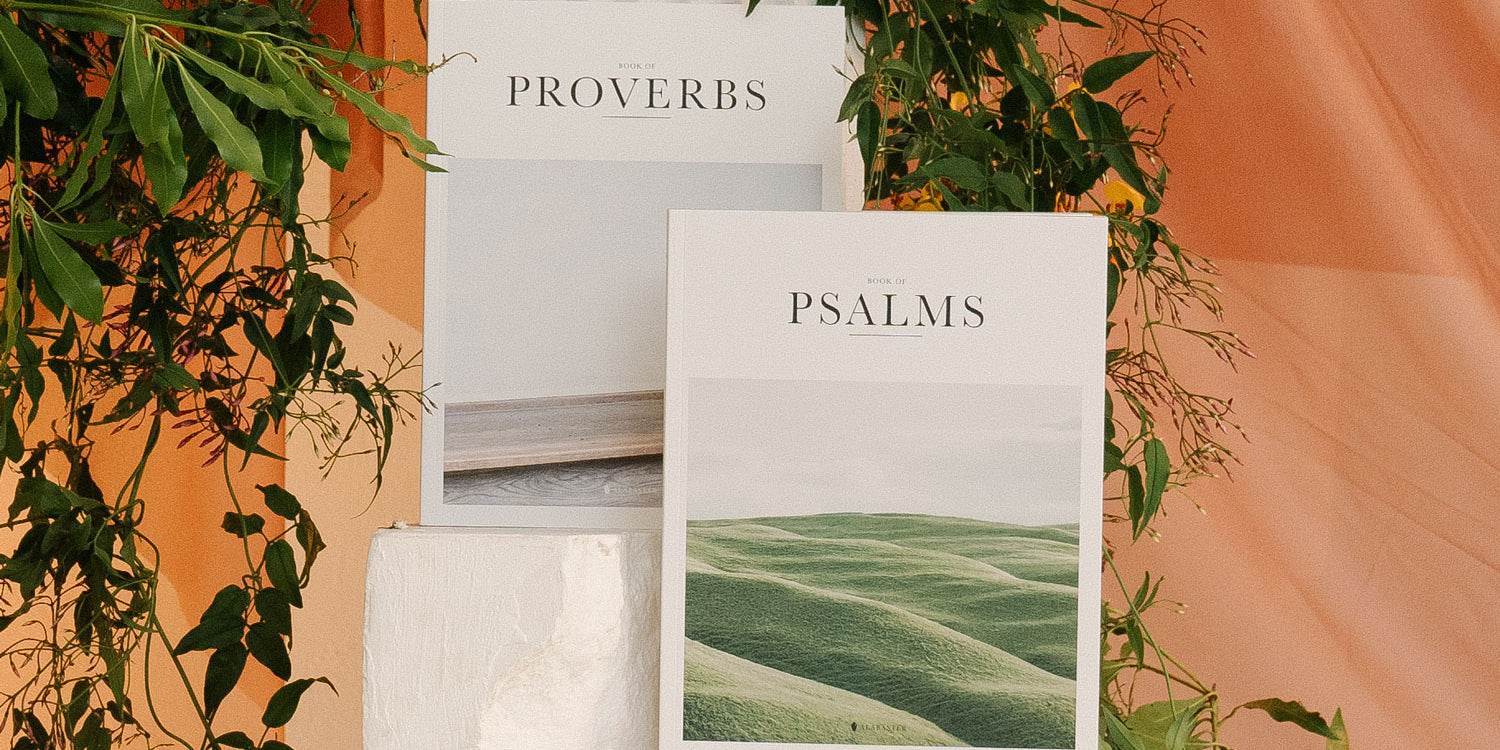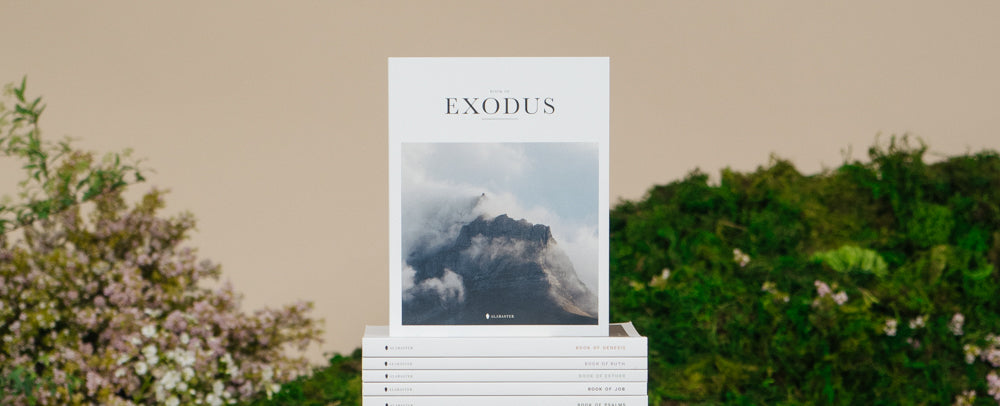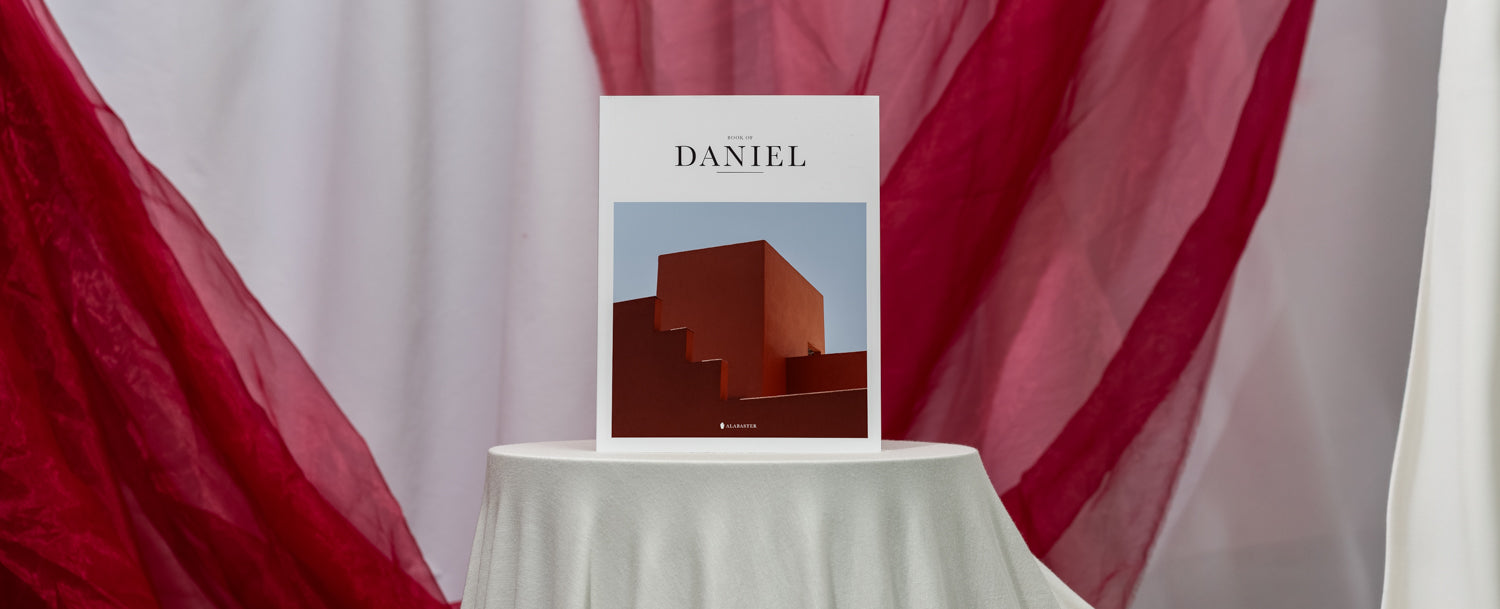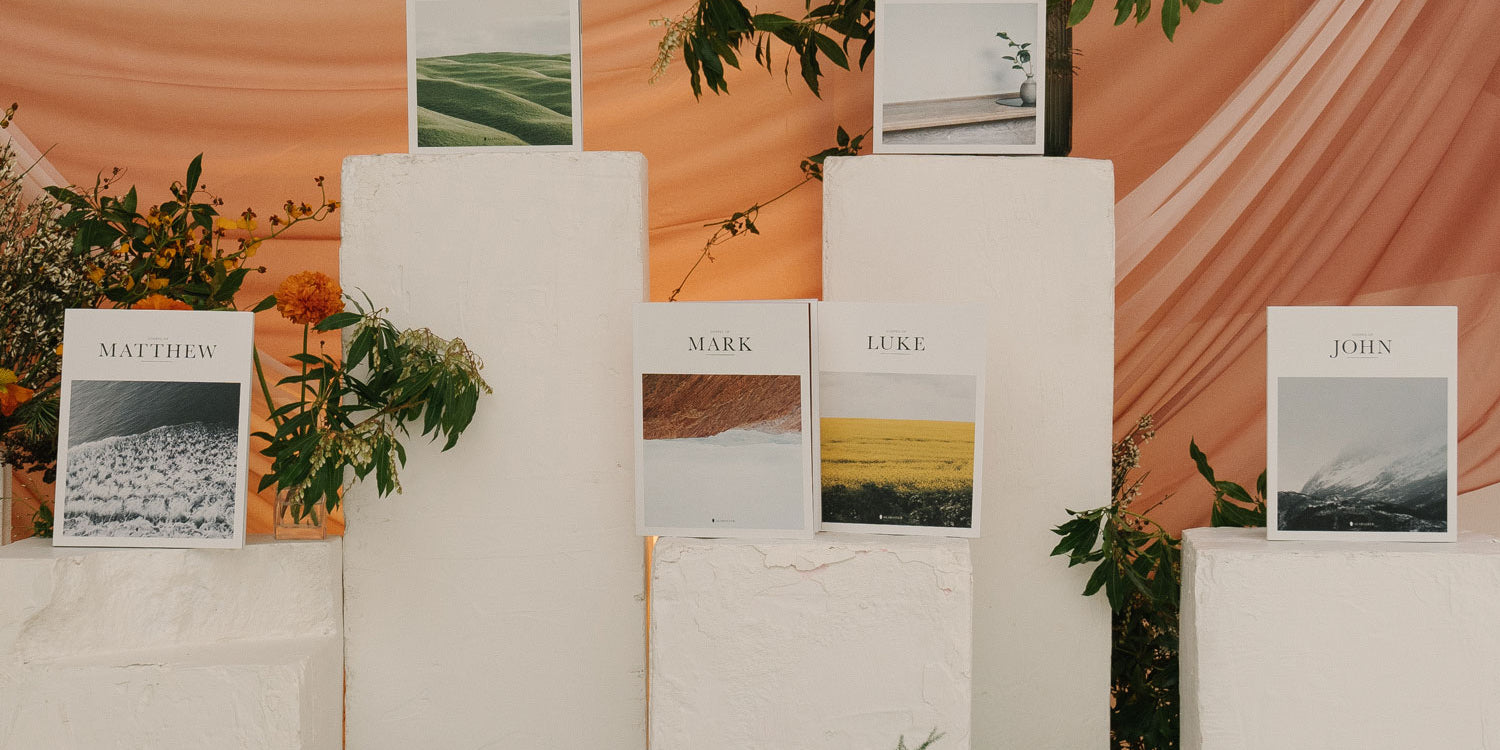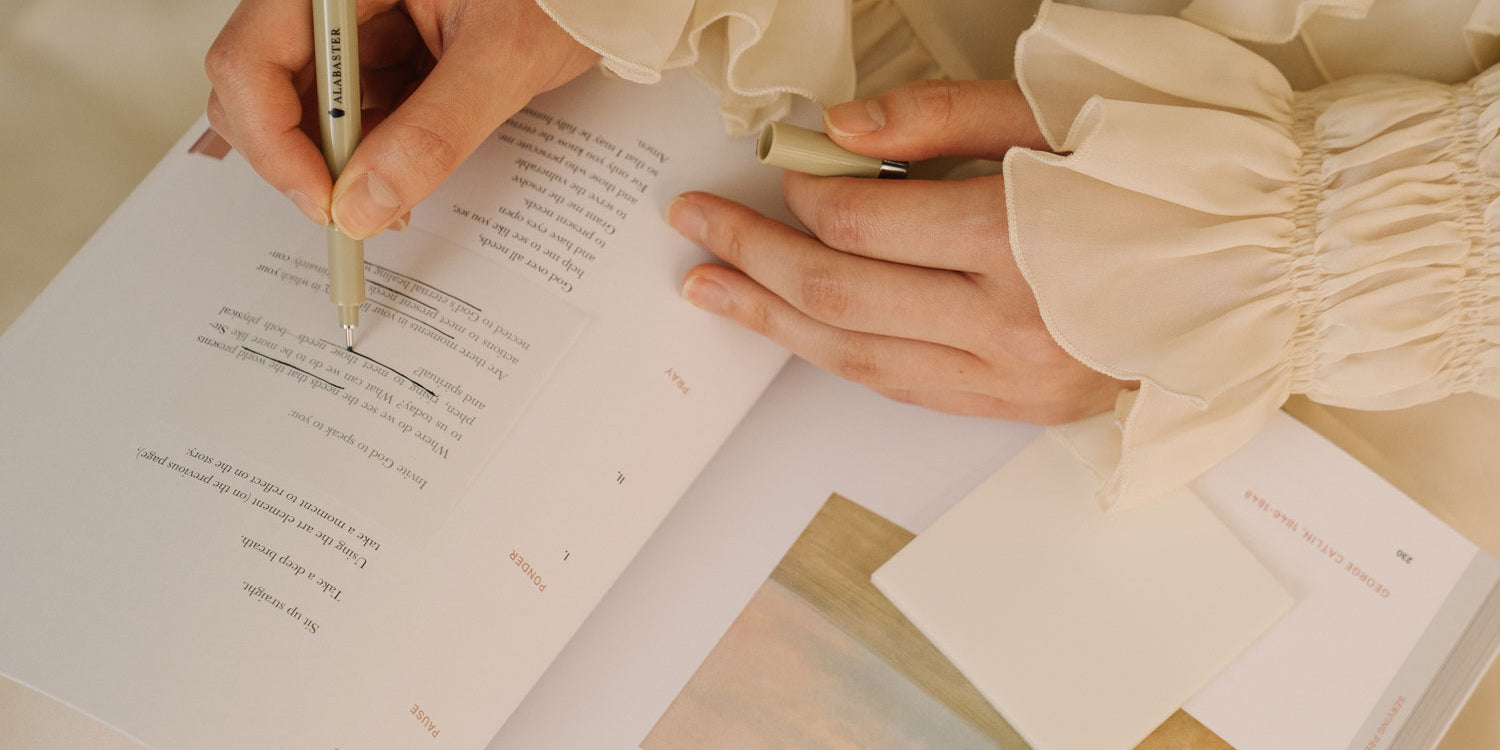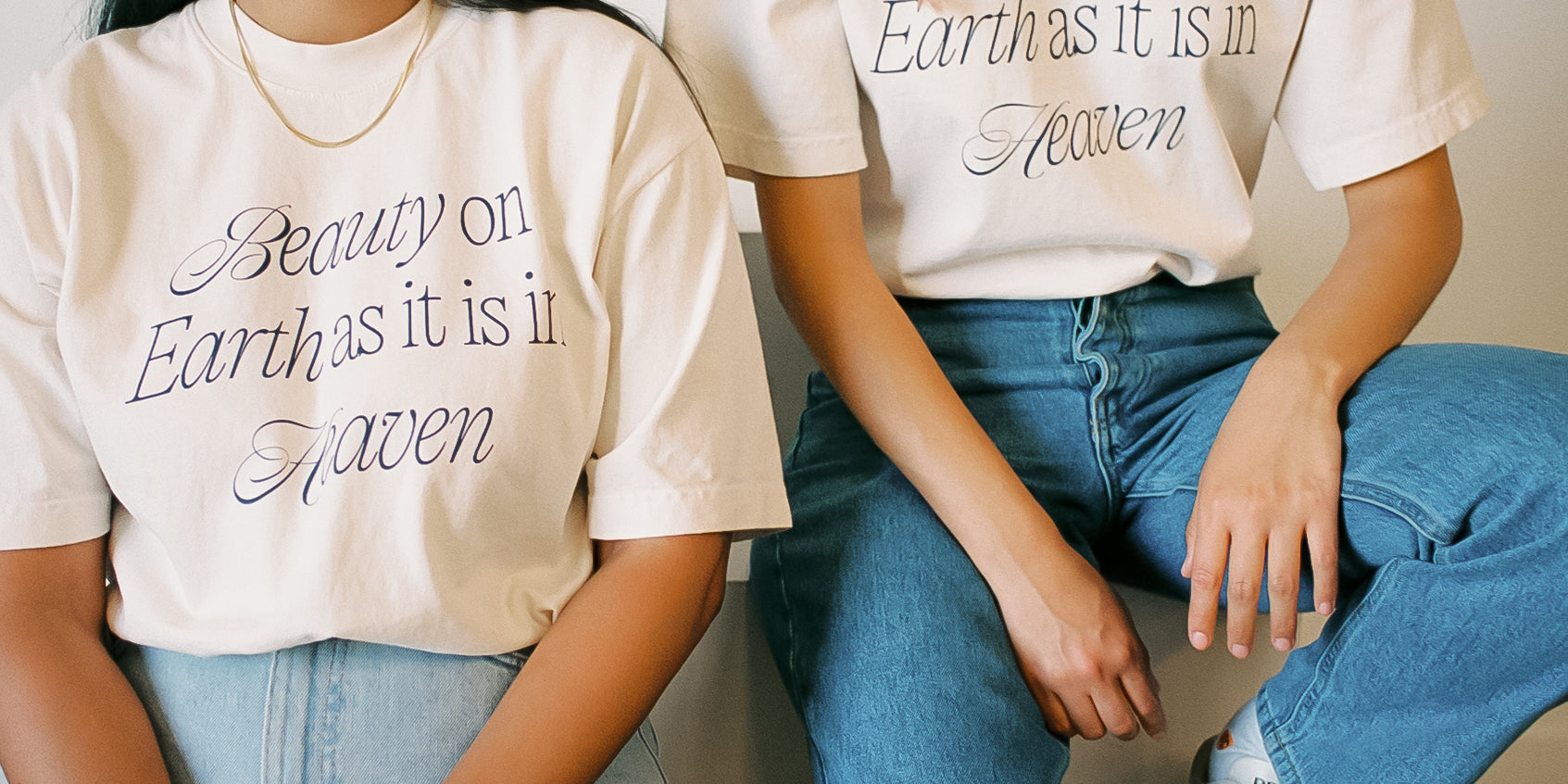An interview with the fashion blogger on the aesthetics of fashion, the creative process of fashion, and how it all connects to a beautiful experience of God.
I. Adaobi Ugoagu sits across from us in a coffee shop in the arts district of Los Angeles preaching a veritable sermon about Instagram, the quest to combat the fake news of a carefully curated social media feed, and the search to live as an authentic human being loved by God while making great art. (Read more from our Interview series with creatives such as Jonathan Ogden, Darren and Trisha Inouye, Kathy Khang, Heart Smiles and Jon Collins.)
“In a culture where we're shifting [primarily to visual content], people are not reading anymore. And it's just an Instagram newsfeed. You see perfect photo after perfect photo after perfect photo. You won't get a sense of their personality and that doesn't make it any different than Allure or Glamour magazine. And the whole problem with these magazines and why there's such a backlash against [them] is because you don't see the personality of the model or what they’re struggling [with] or going through. You just see that beautiful airbrush shot and that's what Instagram is turning into.”
II. To say Adaobi is a fashion blogger does not accurately contain the multitude of identities she lives within. The art she’s passionate about spans the spectrum of creative expression. She’s as obsessed with the British punk band The Arctic Monkeys as she is with the new Solange album. Her favorite writer is JK Rowling because she’s convinced Harry Potter is the greatest piece of fiction ever written. Her biggest fashion inspiration? Lisa Bonet (Denise Huxtable from The Cosby Show).
Adaobi Ugoagu is on a mission. To be fully authentic, human, and unashamed. She lives at the intersection of punk, sci-fi, Harry Potter, the African Diaspora, fashion, faith, and writing. She defies the monolithic categories associated with these things and from that place pursues a life creating.
Adaobi Ugoagu is on a mission. To honor the image of God in which she was made and invite the rest of us to live there too.
“I try to combat these photos where I look ‘ethereal’ or ‘goddess’ [by talking] about my thought process or how I'm feeling. So there are some posts where I'm like, ‘You know before this shoot I was having an anxiety attack because I didn't know what I was doing - I didn't know if this was something I wanted to continue doing.’ And just sort of humanizing myself. I’m creating that balance with my writing where you can see my personality and see that I'm just a human being, but then look at the photo and see that it's still great content, but you'll know ‘Okay this is a person, this is not just someone who woke up like this and is taking amazing photos.’
I use my writing to shed light on my human struggles as a person.”
III. While Adaobi believes her primary calling is to be a storyteller that creates space for those on the margins, the journey to her current medium as a fashion blogger is deeply rooted in her experience of God.
“I believe it was God that told me to start my blog. It was a very interesting time in my life. I was extremely shy. Ask anybody [before] 2013 - I would run away when someone brought out a camera. I had just started my Christian walk freshman year in college. I was sort of coming into myself and trying to figure out what my hobbies were. I knew I loved fashion. But I didn't know what outlet to [choose]. I remember being at home one winter break and God was like, ‘you should take photos and put it on a blog,’ and I was like, ‘I dunno.’”
She bursts out laughing remembering this.
“But I did it. It's been extremely healing in a lot of ways doing this blog. The reason why I was afraid to be in front of the camera was because I didn't have a really good image of myself. I grew up with a lot of image issues. Never really liking my body, never really liking my face, and I was being bullied at a certain time in my life because of those things. I would hide. In middle school, I would just wear a polo shirt and Dickies pants and a big jacket. I wore the same thing everyday and just hid. Meeting God in college - the next step was God saying, ‘Alright I need you to see yourself the way I see you.’ A part of that healing process was going in front of the camera and conquering that fear, taking these photos and putting it out for other people to see.”
IV. This experience of finding healing in the pursuit of a vulnerable art form has allowed Adaobi to integrate a deep connection with God into her creative process.
“Since God was the One that put it on my heart to start [the blog], I constantly ask Him, ‘Lord give me ideas. You created art, You created fashion, plant seeds in my heart of what story I could tell through my photos.’"
V. We walk around the Arts District scouting locations for our photo shoot. Graffitied walls, busy intersections, empty lots. Adaobi confidently rules out all of our ideas for locations because she knows exactly what she’s looking for. She walks with a lightness, unphased and focused. If there is any value that Adaobi wants to embody in her approach to fashion blogging, it’s the mystic discipline of becoming carefree.
“I think that in wearing what I want I am embodying carefreeness by staying true to who I am in my aesthetic. That is directly related to how I want to live my life with God - carefree!” She shouts this, laughing.
“I believe that true carefreeness and 'the look' of carefreeness is found in God. It looks like a point in my life where I am satisfied and secure in knowing how much God cherishes and loves who He has created me to be. In knowing that, I picture myself walking and talking with ease and a lighted-heartedness. That character will inevitably inform my aesthetic. Clothes are actually a small part of the equation because at the end of the day it’s about how I wear it as opposed to what I'm wearing.
I want to ‘wear’ carefreeness, ease, and lightheartedness, and my clothes are just a visual representation of that.”
VI. In elementary school Adaobi wrote a Powerpuff Girls inspired comic book, and in high school, an unpublished novel. Today she’s writing a fashion blog. She has dreams of eventually launching a magazine to tell the stories of those who feel “unseen.” Adaobi embodies a progressive creative process that has yet to culminate, but is always growing towards telling the stories that are rarely held at the center of society.
“If I had the amount of black women and women like me that I'm seeing now in the media space 10 years ago I would have probably been a way more confident woman. It just wasn't out there.
I didn’t see black girls that liked rock ‘n’ roll but could also nod their heads to Frank Ocean. I always thought I was strange that I had to walk these two lines and was often teased because of it. I didn't necessarily fit in with whatever the African American stereotype was supposed to be. I was hanging out with rock heads but I was the only black girl amongst a whole bunch of white people.
Seeing websites like Afropunk where you see people mixing an African aesthetic with elements of punk and rock ‘n’ roll, I was like ‘Oh my god there's so many people like me!’ and I wanted to continue that conversation. That can't stop.”
VII. We ask Adaobi to share more about Afropunk as an aesthetic and how it informs her relationship to creating dynamic fashion.
“Afropunk is liberating the black image, the black story and is telling people, ‘We are going to be what we want to be.’ The media paints us a certain way, books paint us another way, we're always put into this really tight archetype of what black people are supposed to be. [So Afropunk is] a merging of the African aesthetic with other subcultures that are not readily seen as African. When you see two of those textures or two of those cultures sort of mix, it's not only interesting but a very powerful image. When you see a black person wearing a septum ring but they have African beads on but they're also wearing thick platform boots that's like ‘Woah,’ that's a very powerful image.
“The reason why I take Afropunk to be so powerful is because it's a symbol of liberation. And just showing people that I can be both. Because I struggled growing up thinking, ‘I can't be both.’ I can't listen to rock music and then rap. I thought to myself, ‘It's weird and no black person does that.’ And that's a lie. You know? We can be both. We can sit down and talk about 1980's hair bands and be like ‘this is dope,’ and then listen to a Kendrick Lamar album and break it down. And for me it’s liberating to know that I'm both. That I can be both. That's what I feel that the larger symbolism of Afropunk is.”
Who we are culturally and ethnically is inextricably tied to our creative process. People do not exist in a vacuum. Human does not happen without context. We are always rooted in a tangible experience, time, and place. Our ethnicity is always integrated into the way we experience God, personhood, and community. This extends out to our practice and experience of creativity. Art does not happen in a vacuum. It is also rooted in a time, place, and community. To not tell that story leaves us lacking context - and ultimately inhibits our ability to appreciate the fullness of the person before us or the creative thing they are doing. We bring all of who we are into our creating. All of our parts before our medium. The totality of self before the Lord as we co-create and co-labor towards a more beautiful human flourishing.
VIII. On fast fashion, intentionality, and consuming less:
“You realize very quickly in this fashion game that a lot of people are buying clothes all the time. And they're switching it out all the time. I was very overwhelmed by that. So I tried to research ways that would be more fulfilling to me than just buying a bunch of clothes that also didn't necessarily matter to me. Every single piece of clothing I have matters to me in some way because I curated it.
“I kind of fell into sustainable fashion. I don't think I was ever like ‘Hmmm I want to be sustainable now.’ I think on a larger level it's good for the environment because of the fact that fast fashion is such a beast and people overseas are being exploited because of our need to consume. But I also think that just as a Christian person, consuming less and being intentional about what you do, whether it be how you buy your clothes [or] being able to
slow down that process helps me to deliberately create things that are a lot more interesting and a lot more unique to me than if I were to just drop bucket loads of money at Forever 21 just so I can catch up with the trend.
IX. On the purpose of art:
“What I think is most important in consuming art is that whatever you consume, be it music film, fine arts - it needs to make you feel... it needs to give you a lift. So I used this term that my 10th grade English teacher used to say when I would write my papers - she would say things like, 'write your paper and by the end of the paper I want to walk out feeling aspirational. I want to feel that lift.’ And so for me when I'm doing my fashion blog, I can be inspired by a Wes Anderson film. I can be inspired by just listening to Solange. I can be inspired by just looking at a bunch of Japanese art. If I feel a lift after that? That's what you should feel before you die.”
X. Spending the afternoon with Adaobi was an education. Her ability to jump from fashion to social justice issues to where she wants the next photoshoot to her favorite Arctic Monkeys album and seamlessly connecting those things leaves you with the impression that she is going somewhere and it’s up to you to be a part of that or not. Hanging with Adaobi requires participation.
Adaobi Ugoagu is on a mission. To create art that moves people. To live authentically. To be carefree before the presence of God. To lift up entire communities with stories that matter told in interesting ways. Adaobi Ugoagu is on a mission, and it’s up to us to decide if we’ll follow.
Learn more about Adaobi here
Words—Geoff Gentry
Photos—Bryan Ye-Chung

